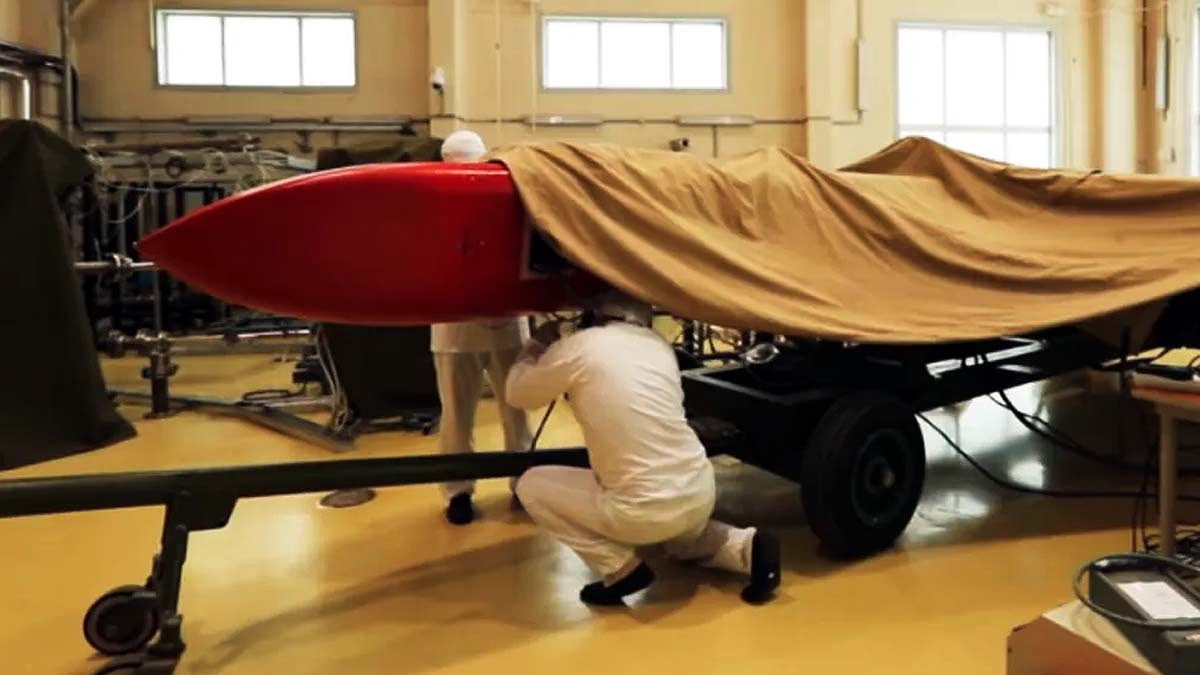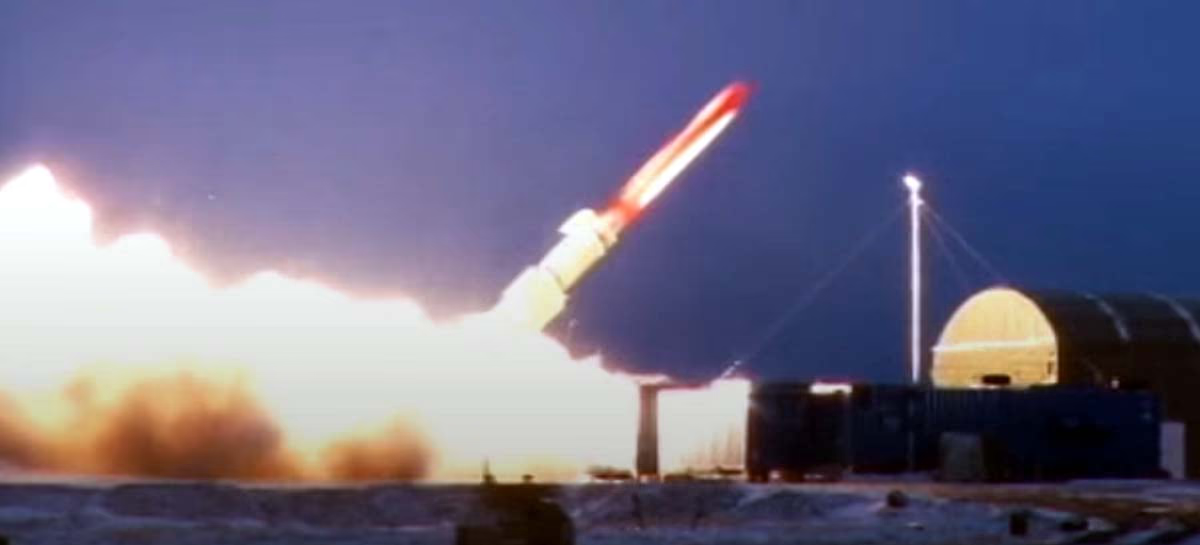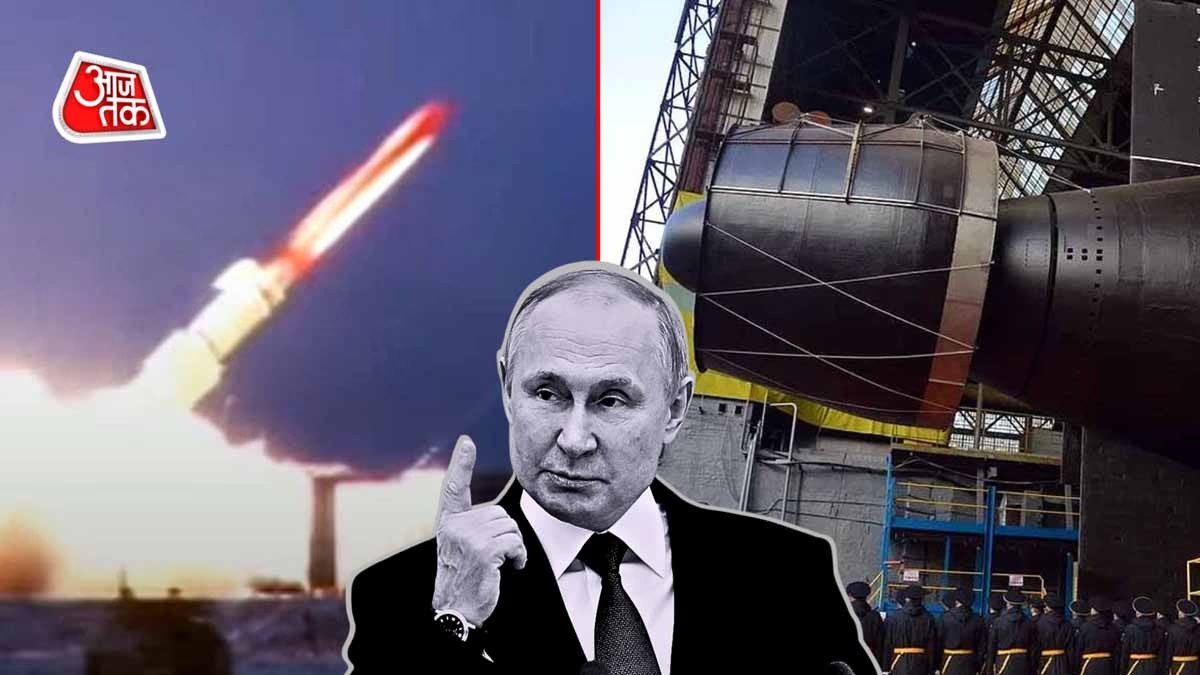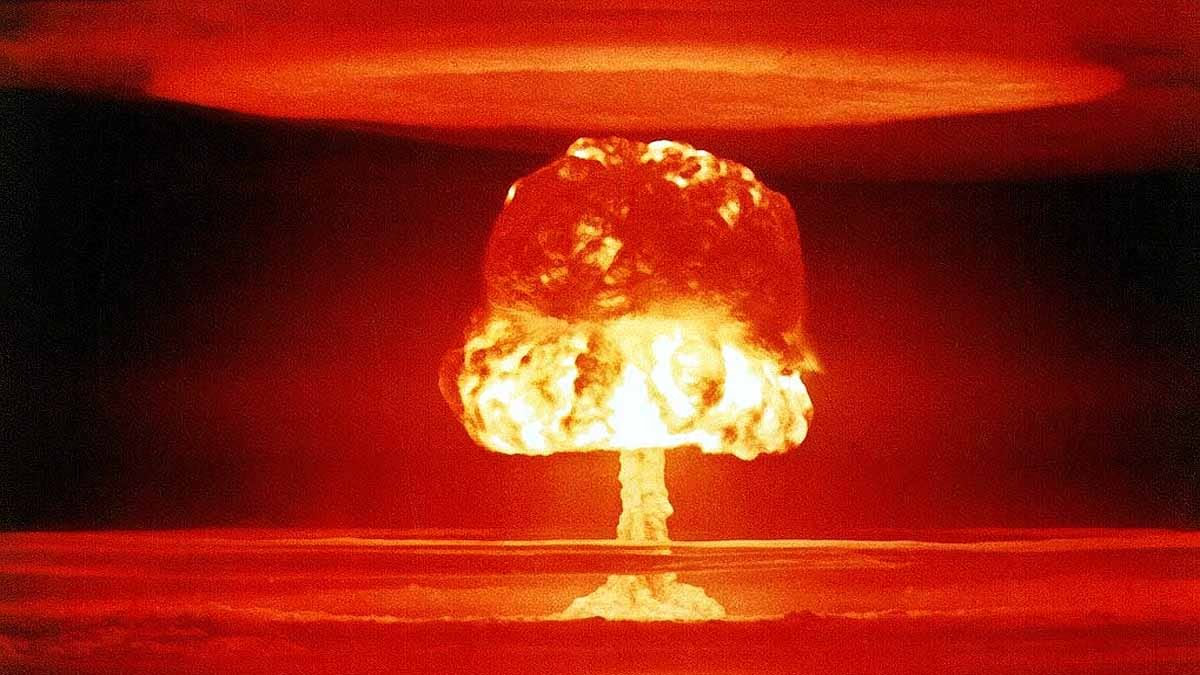In a demonstration of power, Russia has unveiled its newest deadly weapons to the world. First, the Burevestnik missile, then the Poseidon underwater drone, and now the innovative nuclear submarine, Khabarovsk. All are nuclear-powered and capable of ambushing and annihilating enemies at sea. But what exactly is Russia's 'war plan'? Is it a tactic to intimidate NATO in response to the Ukraine conflict?
Russia's first 'super weapon' is the Burevestnik, also known as SSC-X-9 Skyfall. This cruise missile is powered by a nuclear reactor, meaning concerns about fuel depletion are nonexistent. It can circumnavigate the globe mid-flight and is planned to join the military by 2025.
Read More: What goes into preparing for a nuclear test? Trump's hints regarding PAK
How does it work?
Although compact, this missile can carry a 40-megaton nuclear warhead and can strike enemy cities while flying under radar coverage over the sea. It's claimed to have undergone tests in 2024.

Source: aajtak
Why is it dangerous?
Possessing an 'unlimited range', it can reach any corner of the US and is said to evade NATO's missile defenses. Russian President Vladimir Putin has labeled it as a 'great weapon', capable of encircling enemies with a radioactive cloud.
Read More: Pakistan's worst year since 1971... Over 1100 security personnel killed by October
The subsequent weapon, Poseidon, isn’t an ordinary drone—it's a nuclear-powered underwater vehicle capable of reaching enemy shores undetected and detonating with devastating force.
How does it work?
Poseidon, carrying a nuclear warhead of 100 megatons—yielding power thousands of times greater than the Hiroshima bomb—can travel at 1,000 meters depth over 10,000 kilometers. Russia successfully tested it on November 5, 2024.
With its capability to create 'tornado-sized' tsunamis that could inundate coastal cities in the US, Russia dubs it a 'doomsday weapon'.
Read More: The conspiracy of a two-front war against India fails; now PAK fears a three-front war
Russia launched the Khabarovsk (Project 09851) submarine on November 2, 2025, at the Sevmash shipyard, marking the world's first submarine specifically designed to deploy Poseidon drones.
How does it operate?
As a nuclear-powered vessel, it is built for long-range strategic missions, housing 6-8 Poseidon drones. It will navigate open ocean expanses, releasing drones to target foes undetected. Fully operational readiness is expected by 2027.
Why is it dangerous?
This 'silent killer' hides effectively from radar and protects its Poseidon payloads. It's an advancement over the previous Belgorod submarine.
According to Russia's Defense Ministry, it is a part of their nuclear arsenal that will leave the adversary breathless.
All these weapons are integral components of Russia's extensive strategy, aimed at countering NATO, perceived as more powerful. Consequently, Russia emphasizes asymmetric warfare for significant impact with fewer resources.
Read More: Breathing struggles in Delhi-NCR amid toxic smog blanket: Why does it persist?
Strengthening the nuclear triad: Conducting nuclear strike capabilities from air, sea, and land—Burevestnik from the air, and Poseidon and Khabarovsk from the sea.
Deterrence: By showcasing destructive capabilities, especially as NATO aids Ukraine, these weapons were brought forward as a 'red line.'
Future warfare: Between 2025-2030, Russia plans to invest $1 trillion to challenge the US in maritime and aerial dominance.
Testing and deployment milestones: Burevestnik by 2025, Poseidon by 2026, and full Khabarovsk deployment by 2027.
Experts describe these as 'doomsday machines' with world-ending potential if ever deployed, although Russia maintains they are meant for defense.

Source: aajtak
The Ukraine conflict has pushed Russia into this path, as NATO provides arms and imposes sanctions. In response, Russia is upgrading its nuclear capabilities. By October 2025, Russia declared Burevestnik and Poseidon as 'unlimited range.' The launch of Khabarovsk raised US concerns over possible threats to its Pacific bases.
Environmental impact: Nuclear blasts could lead to radiation and tsunamis.
Arms race: A potential return to Cold War tensions as the US might retaliate.
Impact on peace: While these weapons inspire fear, their use would spell catastrophe.
Russia’s plan is clear—strategic surprise nuclear strikes from the sea, integrating Burevestnik, Poseidon, and Khabarovsk. However, experts warn this path assures mutual destruction, while Russia asserts a desire for peace alongside the readiness to teach adversaries a lesson.




